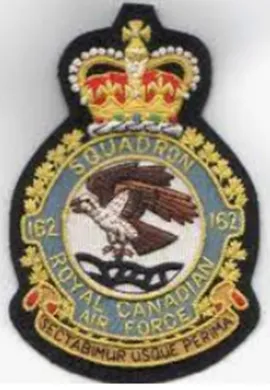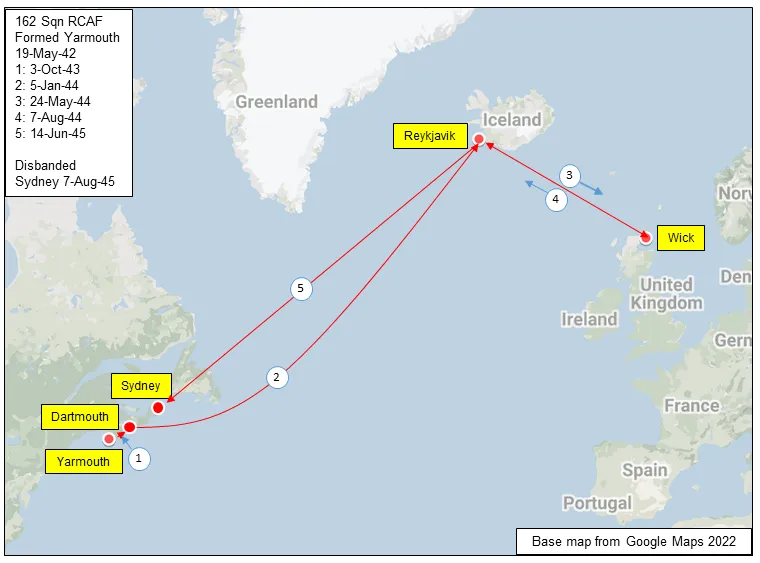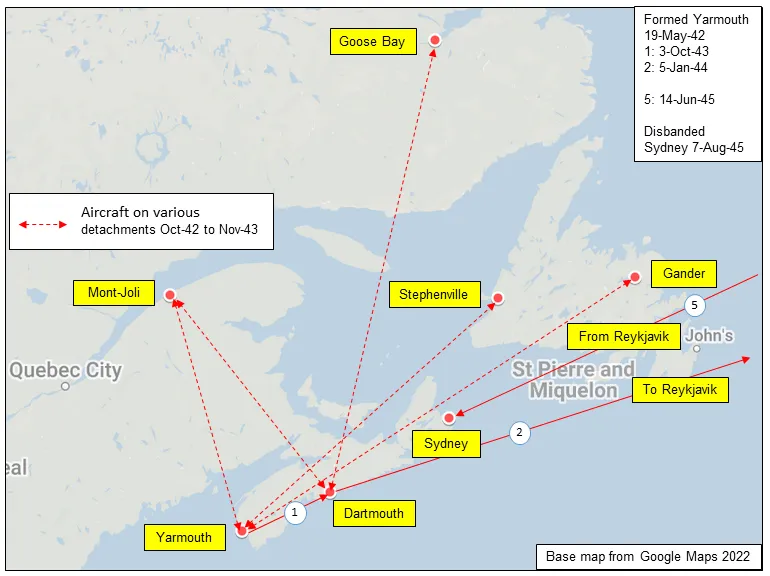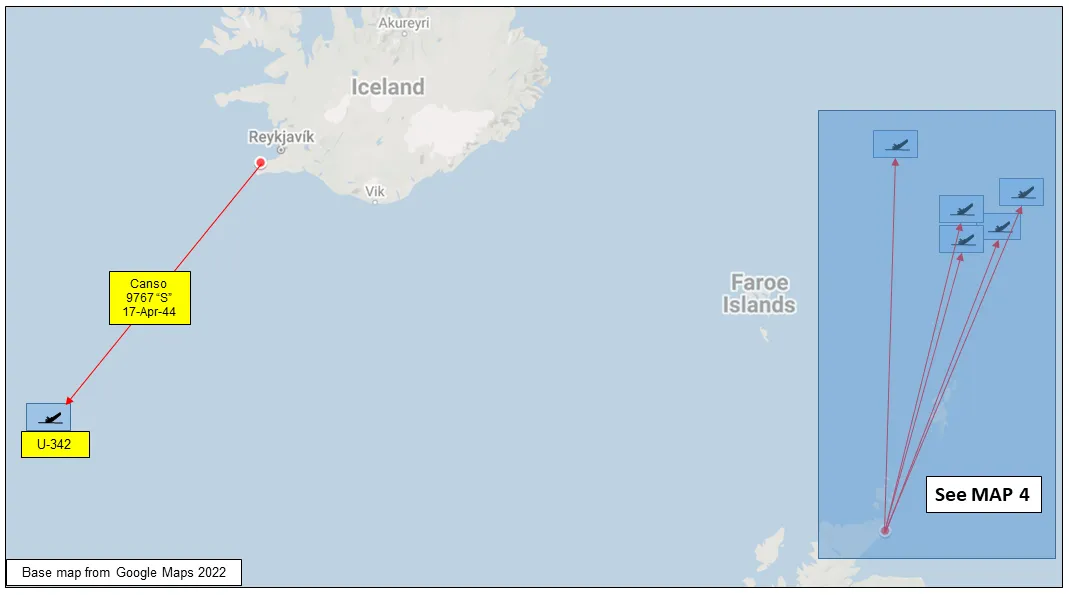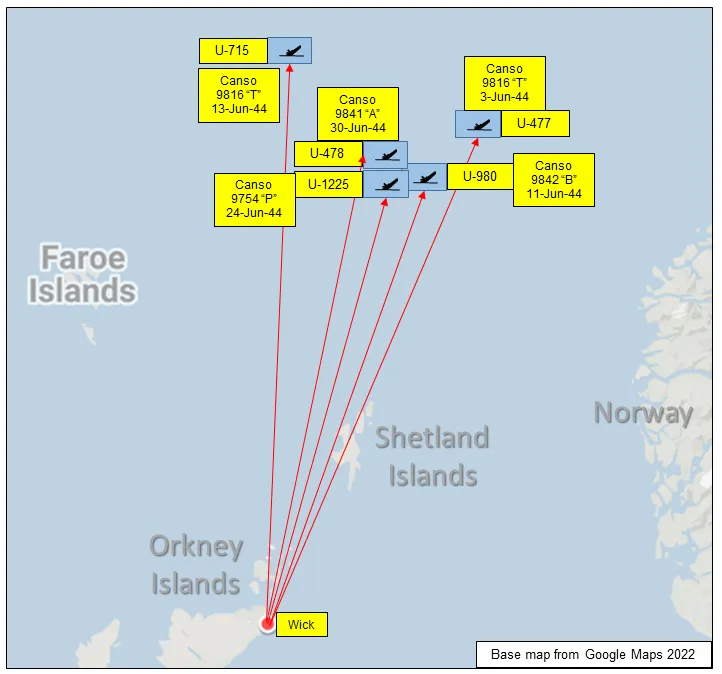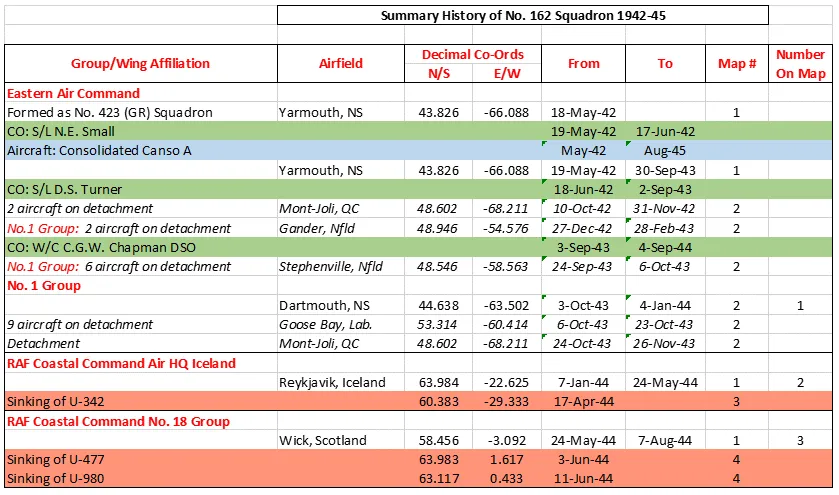162 Bomber Reconnaissance Squadron RCAF (Sectabimur usque per ima) RAF Wick, Scotland. Canso A aircraft 9754 "P" was about ten hours into an antisubmarine patrol off the coast of Norway when it spotted German submarine U-1225 on the surface. The Canso turned to attack, exchanging gunfire with the U-boat and suffering catastrophic damage, including loss of an engine, in the process of dropping depth charges on and sinking the submarine. The Canso was forced to ditch at sea. The entire crew was able to abandon the sinking aircraft
Flying Officer G Campbell DFC (RCAF) survived and was rescued at sea after more than 21 hours in the frigid water in high winds and mountainous seas
The Citation reads: Distinguished Service Order. Flying Officer Bernard Charles Denomy (Can/J.11265), RCAF,-162 (RCAF.) Sqn. Distinguished Flying Cross. Flying Officer Graham Campbell (Can/J.26921), RCAF, 162 (RCAF) Sqn. Flying Officer Sidney Edward Matheson (Can/J.22227), RCAF 162 (RCAF) Sqn. Distinguished Flying Medal. Can IR. 1.80936 Flight Sergeant Israel Joseph Bodnoff, RCAF, 162 (RCAF) Sqn. Can/R.179577 Flight Sergeant Sidney Reginald Cole, RCAF, 162 (RCAF) Sqn. These officers and airmen were members of the crew of the aircraft captained by Flight Lieutenant Hornell, who successfully engaged a U-boat in northern waters. In the engagement they displayed a high degree of courage, discipline and devotion to duty, co-operating splendidly with their captain in his determination to destroy the enemy submarine. Subsequently they suffered great hardships whilst adrift on the sea. During this long period each member of the crew assisted the others to the utmost extent unmindful of his own distress.
(London Gazette No. 36630, Dated 1944-07-28)



